Piping Plovers
/I am posting a dozen photos of Piping Plovers here to make them accessible to a person whose summer work for the Audubon society on Cape Cod involved providing protection for these birds.
David Sparks
I am posting a dozen photos of Piping Plovers here to make them accessible to a person whose summer work for the Audubon society on Cape Cod involved providing protection for these birds.



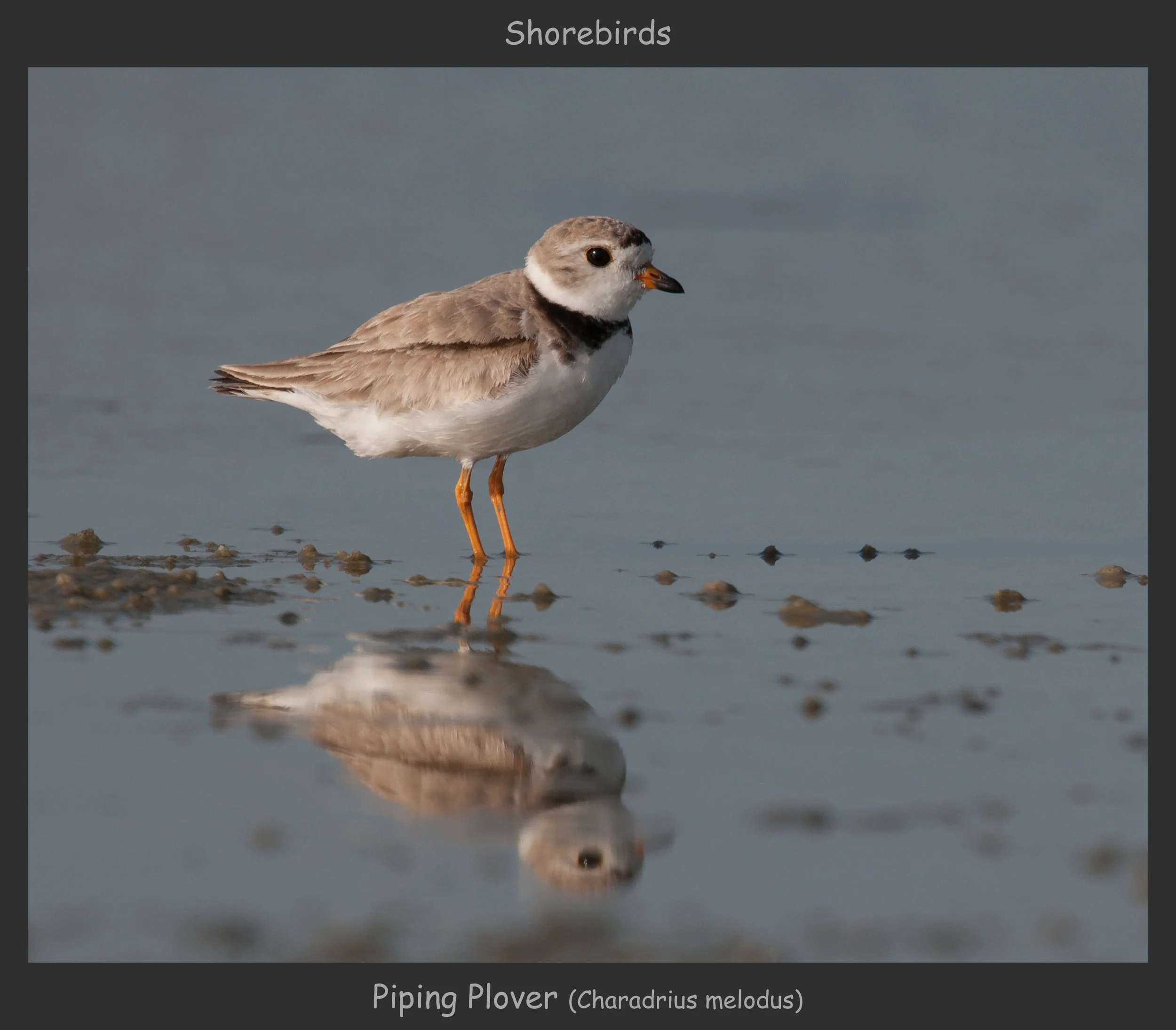
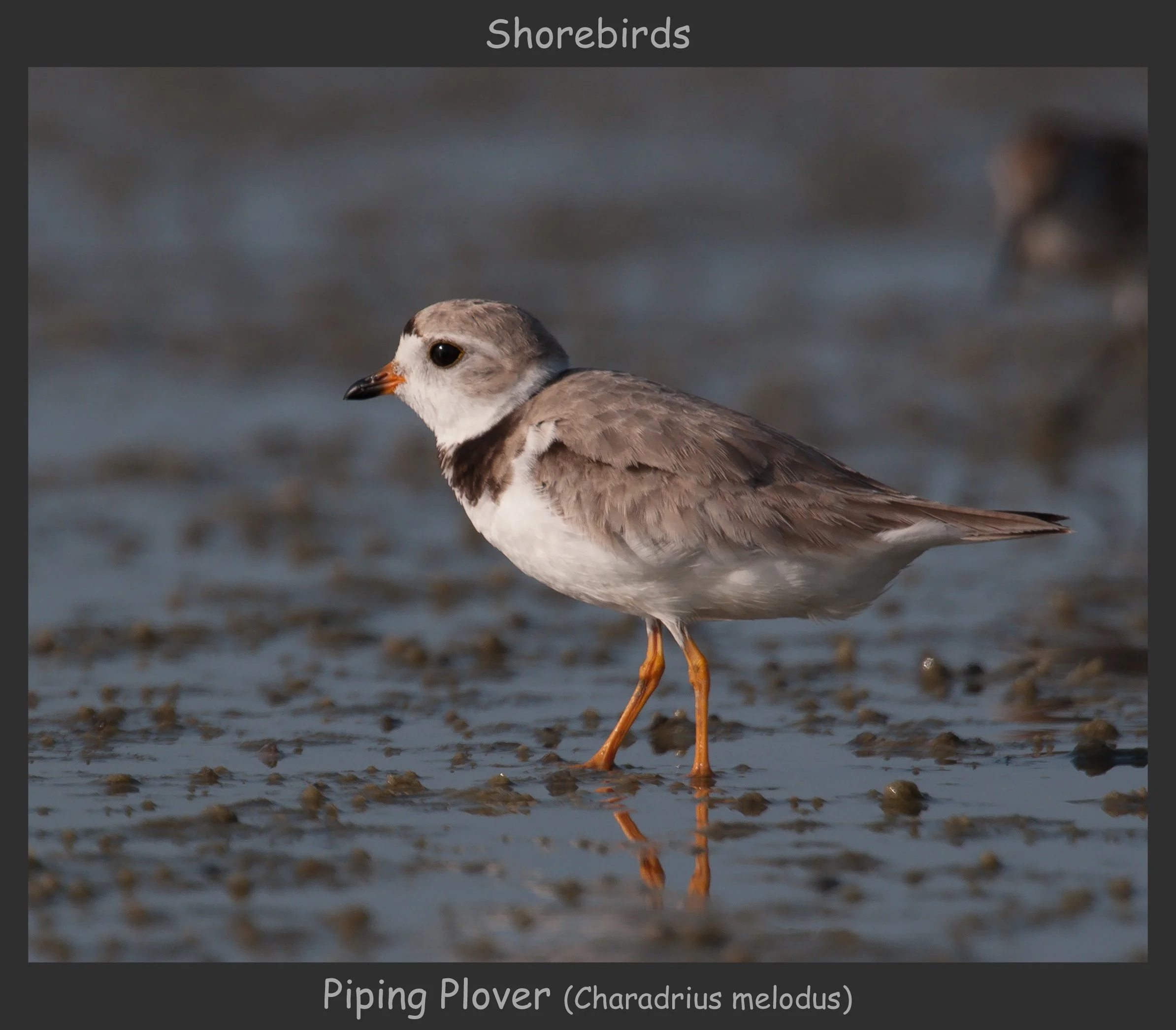



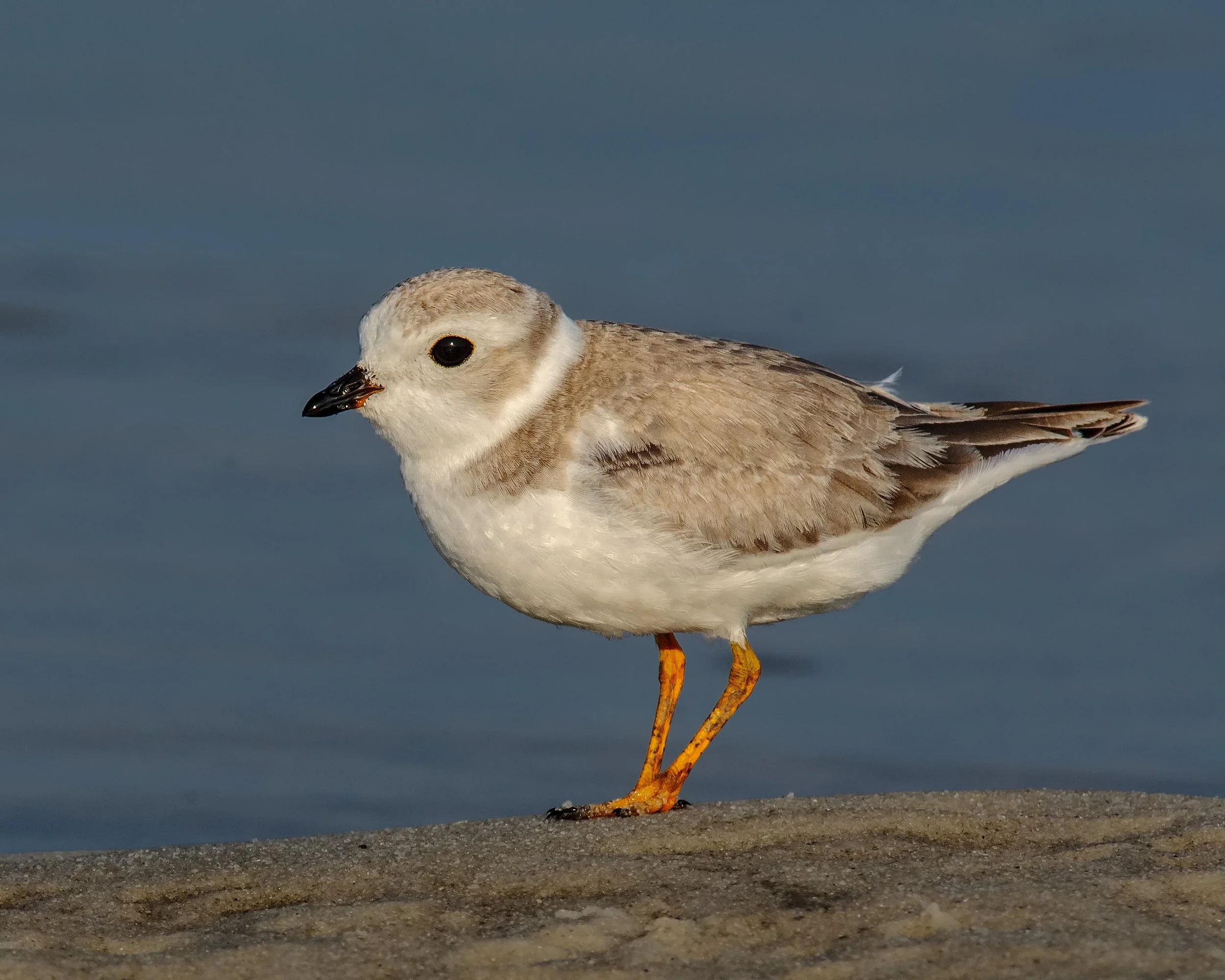

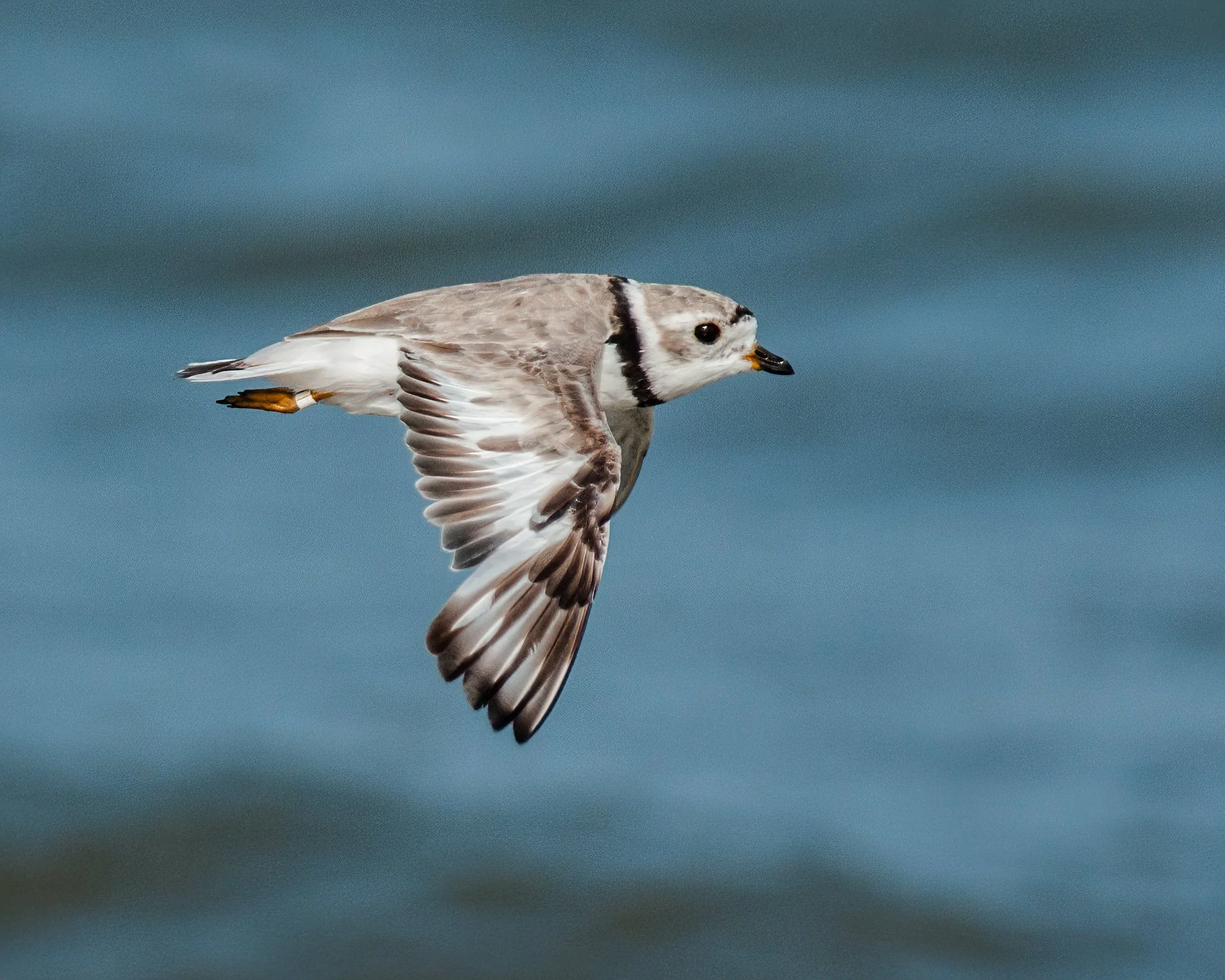
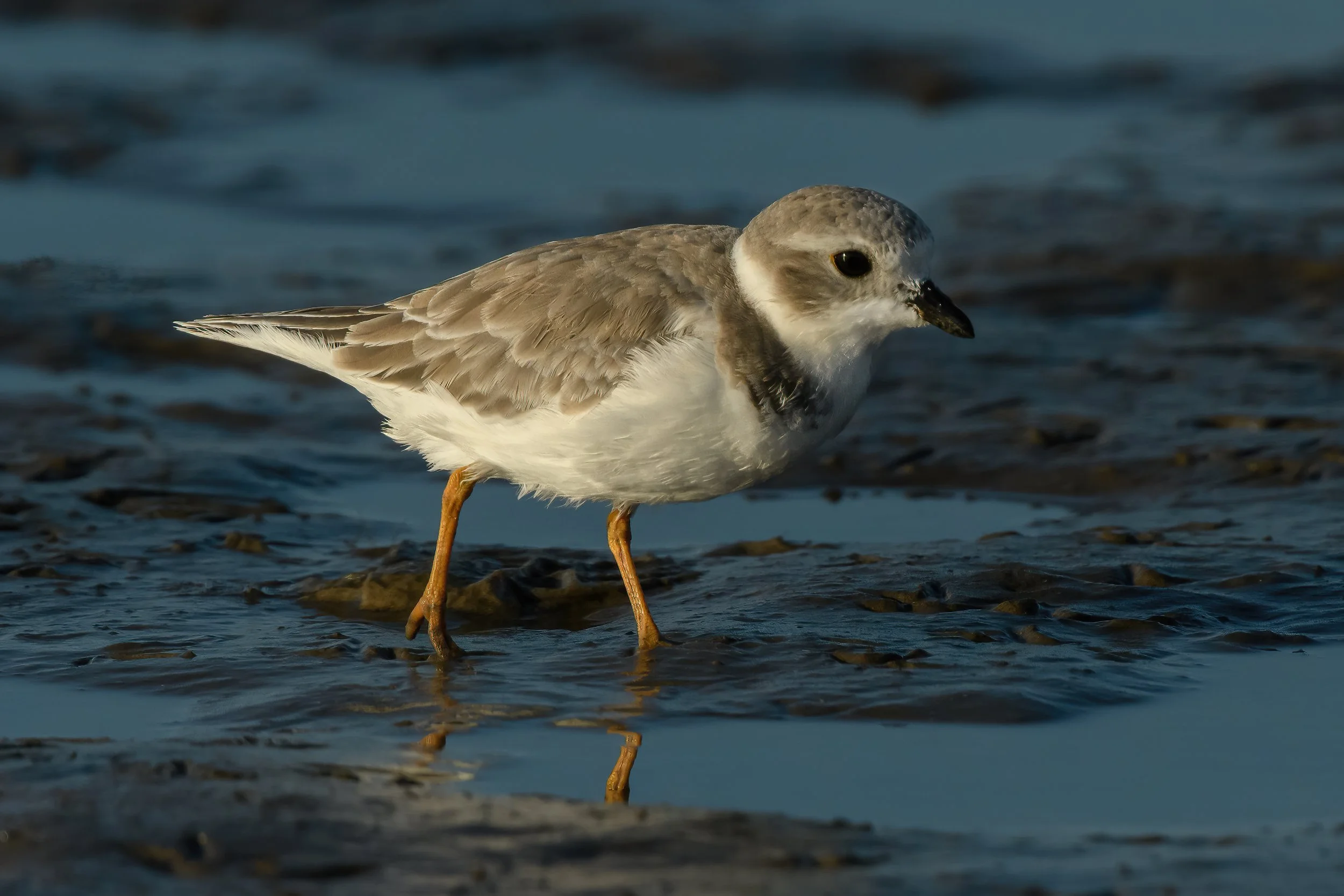


The images and text contained in the 12 inch by 12 inch hardcover book can be viewed on the web by clicking on the link below.
Our photos are supposed to tell a story. The photo below tells a story about a White Ibis feeding in early morning light.
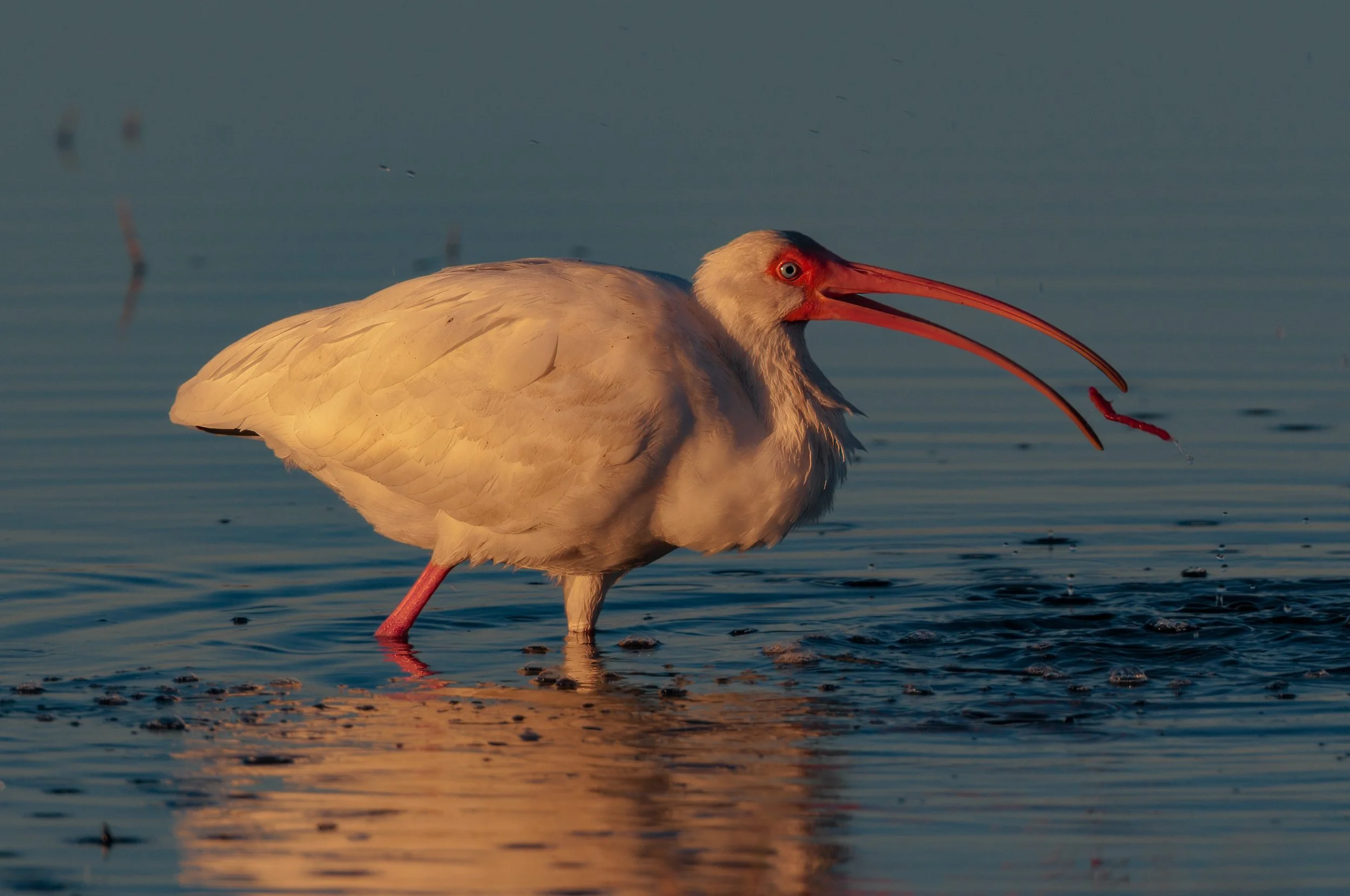
The remaining photos tell a story about the competition for the available food the White Ibis often encounters.

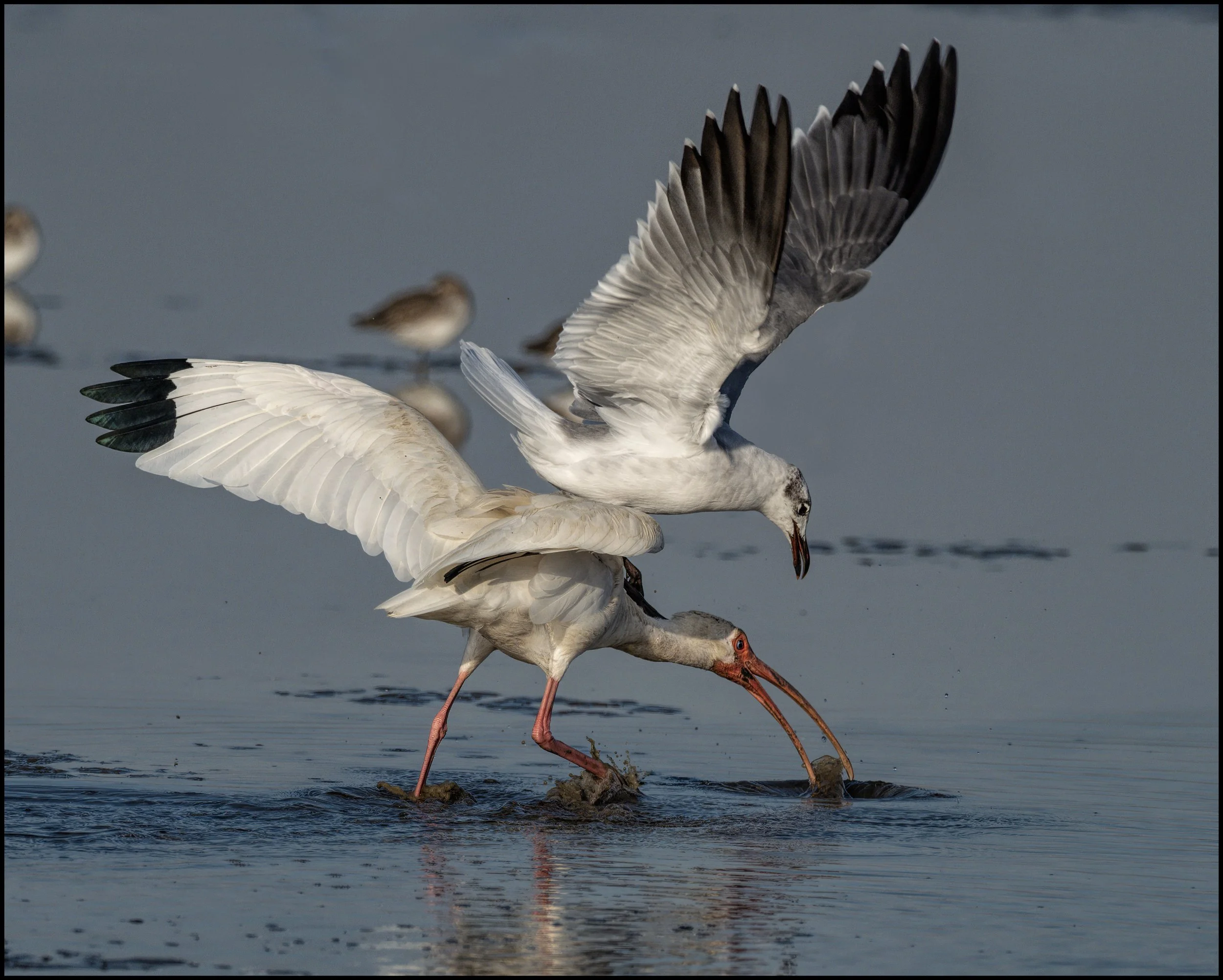
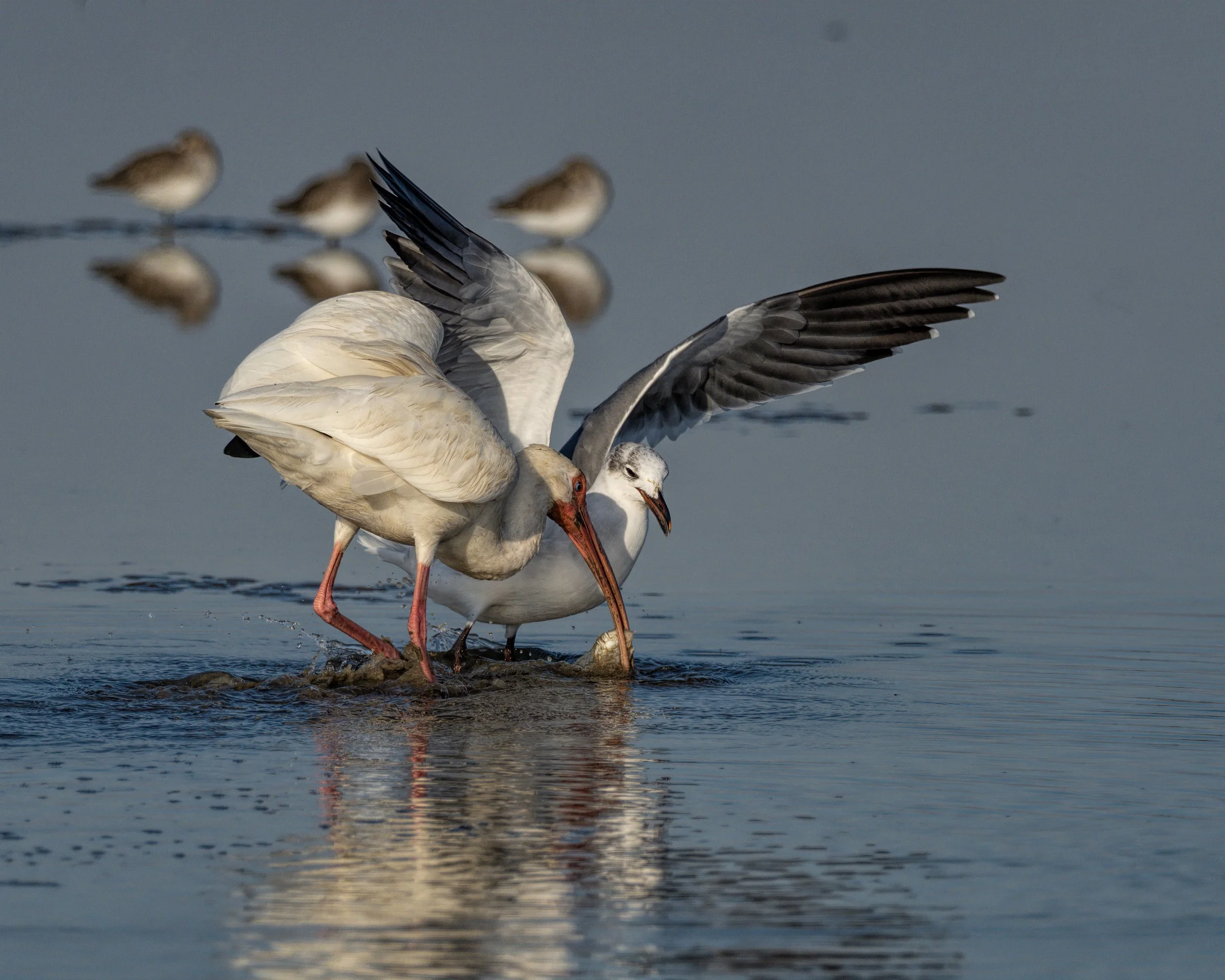

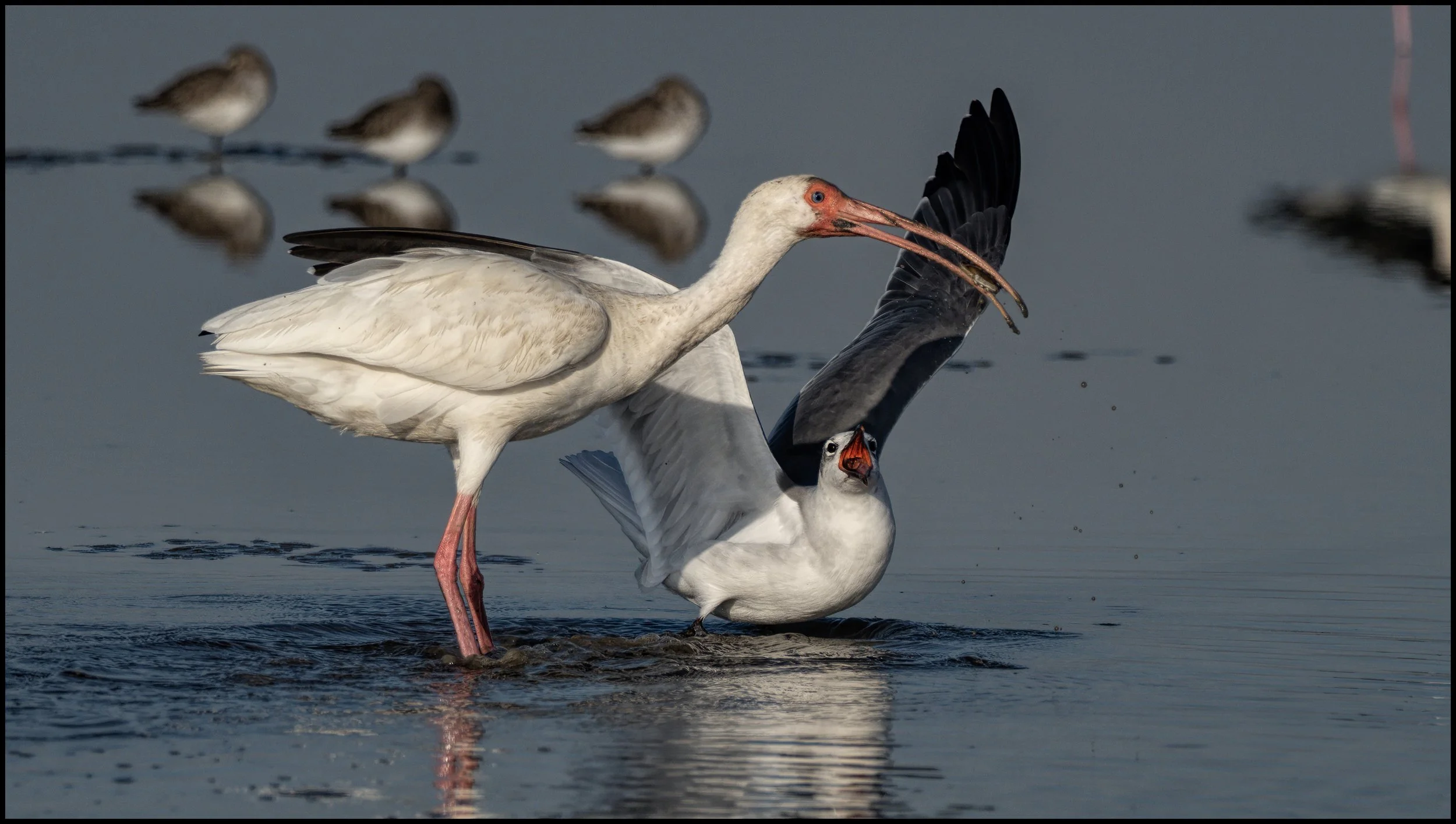
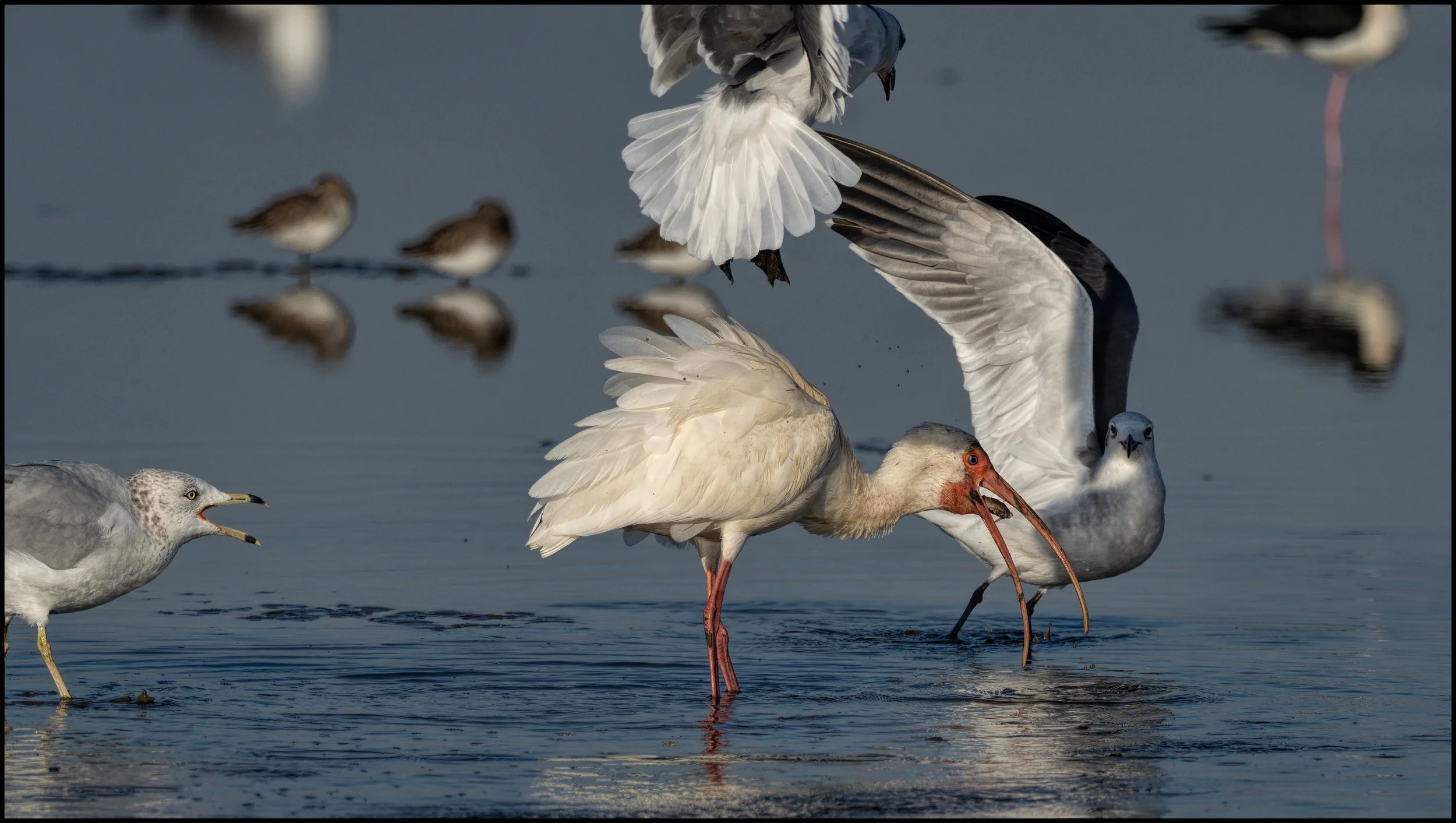
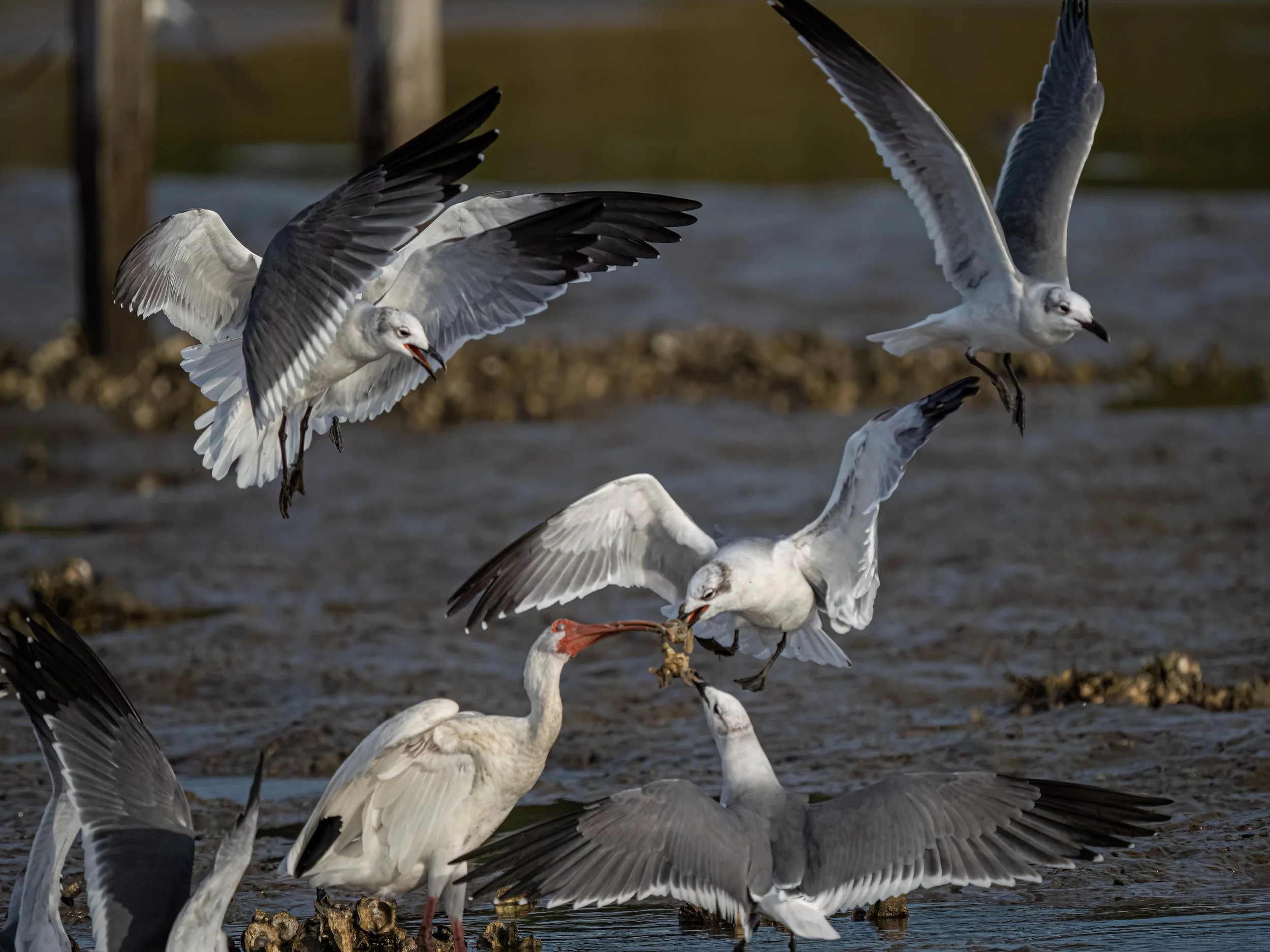
The first photo was taken in February 2014 with a Nikon D300S camera and a 500mm f/4 lens with a 1.4x tc at the Bolivar Peninsula north jetty in Texas. The remaining photos were taken at the same location in November 2019 with an Olympus E-M1X camera and a 300mm f/4 lens with a 1.4x teleconverter.
Sibley’s description notes that their flight is “buoyant and erratic with frequent dips to the water,” a characteristic that makes it difficult to capture photos of them in flight. Ten photos of Black Terns taken at Bolivar Flats in Texas in May 2025 are below. OM-1 camera with 150-400 mm f/4.5 TC lens. Settings: 500mm, 1/1600 sec at f/5.6, ISO 250










At Anahuac NWR in Texas












Photos taken January 29, 2025 at Black Point Wildlife Drive, Merritt Island NWR, Florida. OM-1 camera with 150-400mm f/4.5 TC lens.



Aerial feeding by Snowy Egrets has been observed by many people. Among the various forms that have been described are: hovering to retrieve surface food, agitating the water with one or both feet while hovering (hovering-stirring), capturing prey from the water while continuing in direct flight (dipping), and dragging one or both feet in the water while catching prey during direct flight (foot-dragging). I have observed Snowy Egrets engaged in foot-dragging feeding many times and have quite a few photos of the behavior. An example is shown below.

On a recent trip to the eastern coast of central Florida I saw and photographed Tricolored Herons engaged in the foot-dragging feeding behavior. Photos of the behavior are below. This was the first time I had observed Tricolored Herons feeding in this manner.

The bird is dragging the feet and leaving a disturbance of the water that marks the flight/drag path. Presumably, based on the head position, the bird has spotted a potential prey off to the right.

That (my interpretation) initiated a short hop in which the feet leave the water and …..

the bird lands a short distance away (note the distance beween the location of the feet in this photo and the flight/drag path behind the bird.

The bird lifts the wings to positions that create a shadow. Some ornithologists speculate that the shadow area may be perceived by minnows as a place to hide.

The foot-dragging episode ends with the heron striking in an attempt to capture the prey, ….

an attempt that is successful.
The photos were taken on January 25 and 26, 2025 at Black Point Wildlife Drive, Merritt Island NWR, FL.
Olympus OM-1 camera and 150-400 f4.5 tc lens





While visiting Merritt Island NWR in Florida, I have been amazed by the detail preserved in the reflection of birds when the water is still. Actually, I seem to have become addicted to including the reflection in the photos of my subjects. Evidence of my addiction is found below.

Photo of the Green Heron

Photo of the reflection of the bird
The reflections of the birds are a bit darker than the image of the bird. It should be noted that during post processing, I adjusted the exposure slider to try to remove that difference in order to enable comparison of the detail in the image of the bird and that of the reflection.

The photo of the reflection of the bird has been flipped vertically.

Image of the bird on the left and the flipped version of the reflection on the right
I had many opportunities to view and photograph the foot-dragging feeding behavior of Snowy Egrets while spending December, 2024 and January, 2025 in Titusville, Florida. Eight photos of successful behavior in which the catch can be seen in the beak of the bird are shown below. The last photo captured an occasion in which success may have been thwarted because a tern reached the prey first.



Both birds in the photo above have minnows in their beaks. It was when I saw pools of water with multiple birds simultaneouly engaged in the foot-dragging behavior that I was motivated to photograph the action. Thus, my efforts to photograph the foot-dragging behavior almost never yielded a photo of a single bird in the frame. The photos showing a single bird are cropped versions of the original.






Who gives a hoot
about the feet
of a Coot,

even if for fun
across the water
you might run.

But, finding your lover
might be difficult
in the midst of a cover*.
*The collective noun for coots is a cover.


Photo of a cover of American Coots taken in January 2016 at Merritt Island NWR in Florida
Just finished. A pdf version can be seen using the link below.

"Part bird, part submarine, the Pied-billed Grebe is common across much of North America." This is the first sentence in the CornellLab All About Birds overview of Pied-billed Grebe. In this blog post, I show photos that illustrate a few other statements selected from All About Birds description of the bird and its behavior.
“Like other grebes, the Pied-billed Grebe creates an open bowl nest on a platform of floating vegetation. “
Olympus E-M1X camera with M.150-400mm F4.5 TC + 1.4x tc (263mm)
1/2500 sec at f/8, ISO 1600
July 2, 2021, North Dakota
“Like other grebes, the Pied-billed Grebe creates an open bowl nest on a platform of floating vegetation. “
Olympus OM-1 camera with M.150-400mm F4.5 TC lens (375mm)
1/2000 sec at f/5.6, ISO 400
June 15, 2024, North Dakota
“The Latin genus name for grebe, "podylimbus," means “feet at the buttocks”—an apt descriptor for these birds, whose feet are indeed located near their rear ends.”
Olympus OM-1 camera with M.150-400mm F4.5 TC lens (500mm)
1/1600 sec at f/5.6, ISO 2000
November 23, 2022, St. Marks NWR, FL
“They use their chunky bills to kill and eat large crustaceans along with a great variety of fish, amphibians, insects, and other invertebrates.”
Olympus E-M1X camera with M.150-400mm F4.5 TC (406mm)
1250 sec at f/5.6, ISO 1000
November 06, 2021, Anahuac NWR, TX
“Juveniles have striped faces.”
Nikon D4 camera with 500mm f/4 lens + 2x teleconverter (1000mm)
1/1600 sec at f/9, ISO 1000
October 01, 2014, Anahuac NWR, TX
“Juveniles accompany adults for several weeks.”
Olympus OM-1 camera with M.150-400mm F4.5 TC lens (459mm)
1/1600 sec at f/5.6, ISO 800
June 15, 2024, North Dakota
“Juveniles accompany adults for several weeks.”
Olympus OM-1 camera with M.150-400mm F4.5 TC lens (459mm)
1/1600 sec at f/5.6, ISO 800
June 15, 2024, North Dakota
“Juveniles accompany adults for several weeks.”
Olympus OM-1 camera with M.150-400mm F4.5 TC lens (406mm)
1/1600 sec at f/5.6, ISO 800
June 15, 2024, North Dakota
The tour was led by led by Chuck Haney (https://portfolios.chuckhaney.com/). Chuck lives in Montana and has been hiking, biking, and photographing Glacier for more than 30 years. I enjoyed the interactions with him and the seven other photographers on the tour.
This photo sequence was taken with an OM-1 camera with a 150-400mm f4.5 tc lens @ 207mm; Settings were 1/2500 sec at f/4.5, ISO 500.
Click on each image to see a larger version.

This is another addition to the blog featuring photos of Reddish Egrets taken during a recent visit to the Bolivar Peninsula. I sorted the photos of the birds feeding activity into three categories: chasing, capturing, and consuming. This entry is Capturing - Part 1.
The photos are of a Reddish Egret feeding on the Bolivar Flats Beach on a very windy and cloudy day. All photos were taken with an Olympus OM-1 camera with Olympus 150-400mm lens with built in 1.25x teleconverter set at 500 mm. Other settings were 1/2500 sec at f/5.6, ISO 500.
A slightly larger version of each photo can be seen by clicking on the image.
Reddish Egret - Bolivar Peninsula - Capturing, Part 1-1.jpg
Reddish Egret - Bolivar Peninsula - Capturing, Part 1-2.jpg
Reddish Egret - Bolivar Peninsula - Capturing, Part 1-3.jpg
Reddish Egret - Bolivar Peninsula - Capturing, Part 1-4.jpg
Reddish Egret - Bolivar Peninsula - Capturing, Part 1-5.jpg
Reddish Egret - Bolivar Peninsula - Capturing, Part 1-6.jpg
This is second addition to the blog featuring photos of Reddish Egrets taken during a recent visit to the Bolivar Peninsula. I sorted the photos of the birds feeding activity into three categories: chasing, capturing, and consuming. This entry is Chasing - Part 2.
The photos are of a Reddish Egret feeding on the Bolivar Flats Beach on a very windy and cloudy day. All photos were taken with an Olympus OM-1 camera with Olympus 150-400mm lens with built in 1.25x teleconverter set at 500 mm. Other settings were 1/2500 sec at f/5.6, ISO 500.
This is the first of a few additions to my blog with photos of Reddish Egrets taken during my recent visit to the Bolivar Peninsula. I have sorted the photos of the birds feeding activity into three categories: chasing, capturing, and consuming. This entry is Chasing - Part 1.
The photos are of a Reddish Egret feeding in the Bolivar Flats Audubon Sanctuary adjacent to Rettilion (no litter spelled backwards) Road in Port Bolivar, TX. All photos were taken with an Olympus OM-1 camera with Olympus 150-400mm lens. Settings were f4.5 @ 400mm 1/4000 sec at f/5.6, ISO 500.
Click on an image to see a slightly larger view.
The North Jetty, on the southern end of the Bolivar Peninsula, is one of the two jetties which guard the entrance to Galveston Bay and the ship channel. The jetty was built of huge granite blocks in the 1890's by the Army Corp of Engineers and extends over five miles into the Gulf of Mexico.
This photo of American Avocets was taken while I was standing on the jetty and illustrates that is an excellent place for birding when the tide is low.
Many people use it for fishing.

It is also a good place to view the variety of ships and boats that use the protected channel to the Port of Galveston, Port of Texas City and The Port of Houston.
Powered by Squarespace.